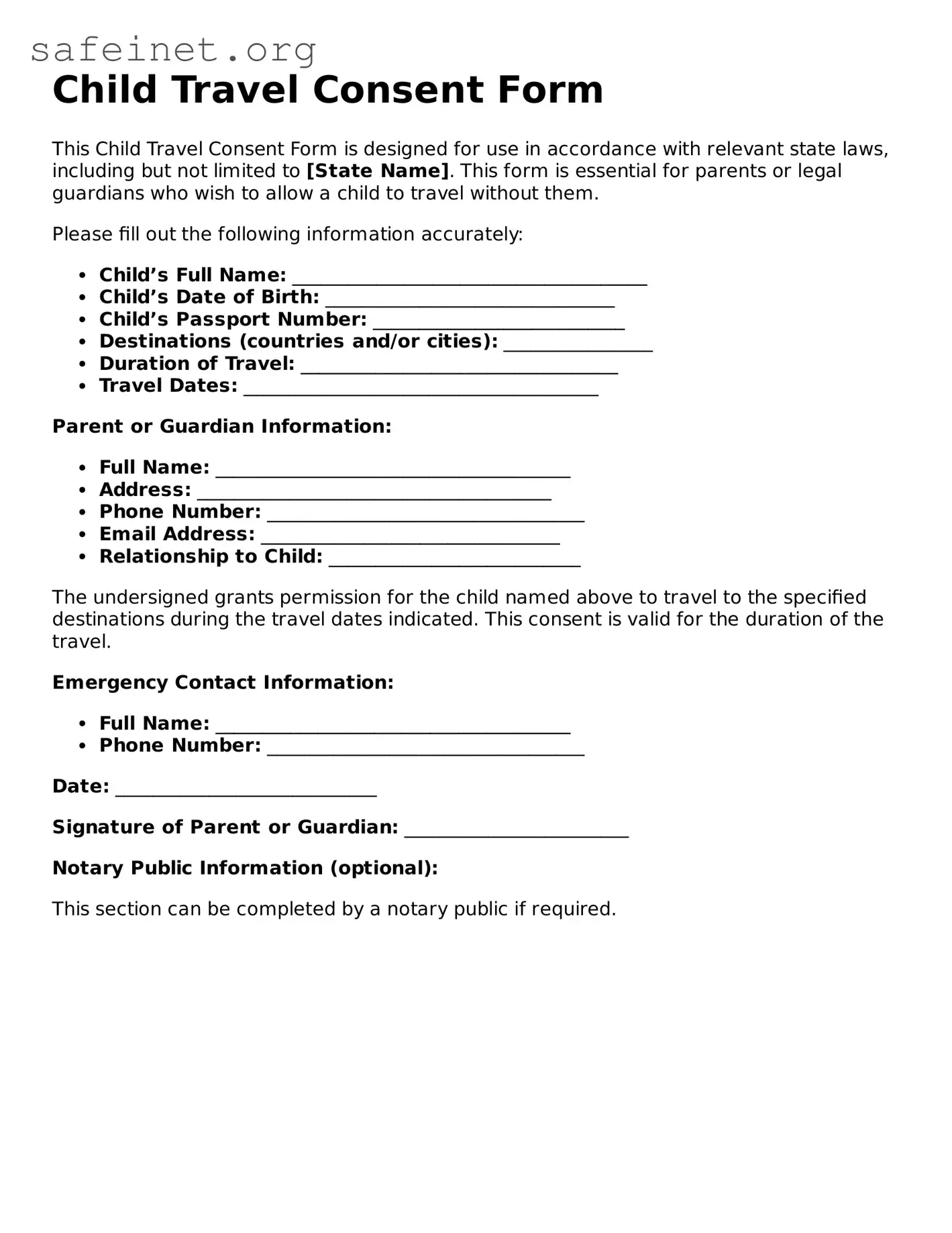The Child Travel Consent Form is akin to the Power of Attorney document, as both involve authority and decision-making regarding a minor. A Power of Attorney allows a designated adult to make legal and financial decisions on behalf of a child, particularly during a family crisis or when parents are unavailable. This document grants significant responsibility, mirroring the consent given in a travel form where guardianship and decision-making during travel are also shared with another adult.
Another similar document is the Medical Consent Form for Minors. Parents or guardians use this form to authorize medical treatment for their children when they cannot be present. Like the Child Travel Consent Form, it ensures that the minor can receive necessary care while under the supervision of another adult, offering peace of mind to caregivers and parents alike.
The Parental Consent for Field Trip form also shares similarities. Schools often require this form for students to attend outings, ensuring that parents agree to the trip and the associated activities. Just as with travel, the consent confirms that a responsible adult can supervise the child during the trip, highlighting trust in the chaperones overseeing the child’s welfare.
The Consent to Travel document is another related item. It directly reflects the Child Travel Consent Form's purpose, often used when children travel abroad or across state lines with adults other than their parents. Both documents verify that the accompanying adult has the permission of the parents, aiming to prevent misunderstandings related to custody and guardianship during travel.
The Guardianship Agreement document is also relevant, as it outlines the legal relationship between a guardian and a minor. Similar to the Child Travel Consent Form, this agreement provides clarity on who is responsible for the child’s well-being. It formalizes the guardian’s authority over decision-making in various situations, including travel and emergencies.
Temporary Guardianship Forms can be compared as well. Parents often complete these forms to grant someone else the authority to care for their child for a defined period. This document serves a similar purpose to a travel consent form by allowing the temporary guardian to make decisions that parents might otherwise make, especially during travel or emergencies.
The Child Care Authorization Form shares similarities as it allows parents to designate someone to care for their child for a certain amount of time. Much like the Child Travel Consent Form, it serves to inform others of who is responsible for the child and grants the designated person the authority to act in the child’s best interest.
The Travel Release Form is also noteworthy. This document specifically releases travel companies or organizations from liability while transporting a minor, emphasizing parental consent. While the Child Travel Consent Form allows travel with another adult, the Travel Release Form focuses more on the terms and conditions under which the minor will travel, ensuring they are safe while in transit.
Lastly, the Child Custody Agreement can be related to the Child Travel Consent Form, albeit indirectly. This legal document defines the custodial arrangement between parents or guardians, dictating who has the authority regarding the child’s decisions, including travel. The travel consent is often discussed within the parameters set by custody agreements, reflecting the ongoing collaboration and legal stipulations involved in caring for a child.
